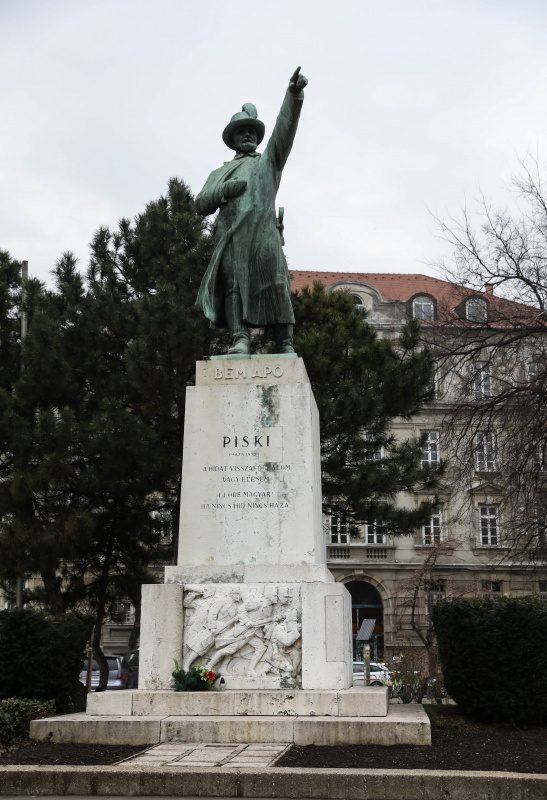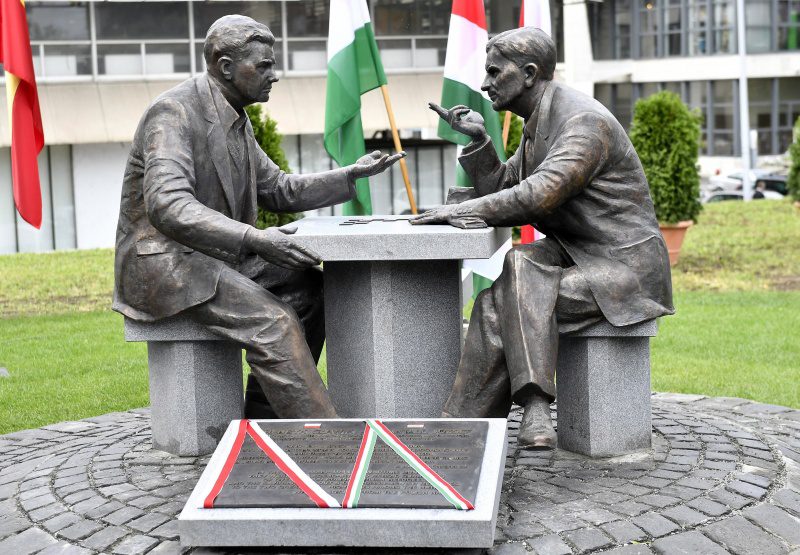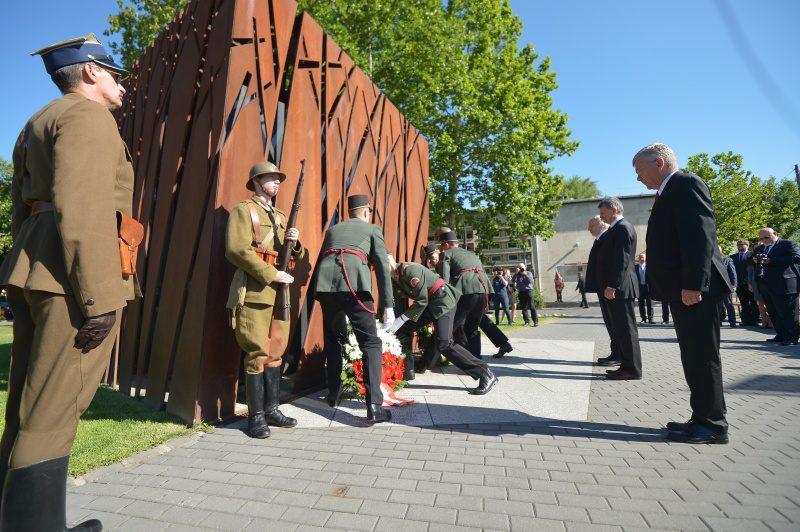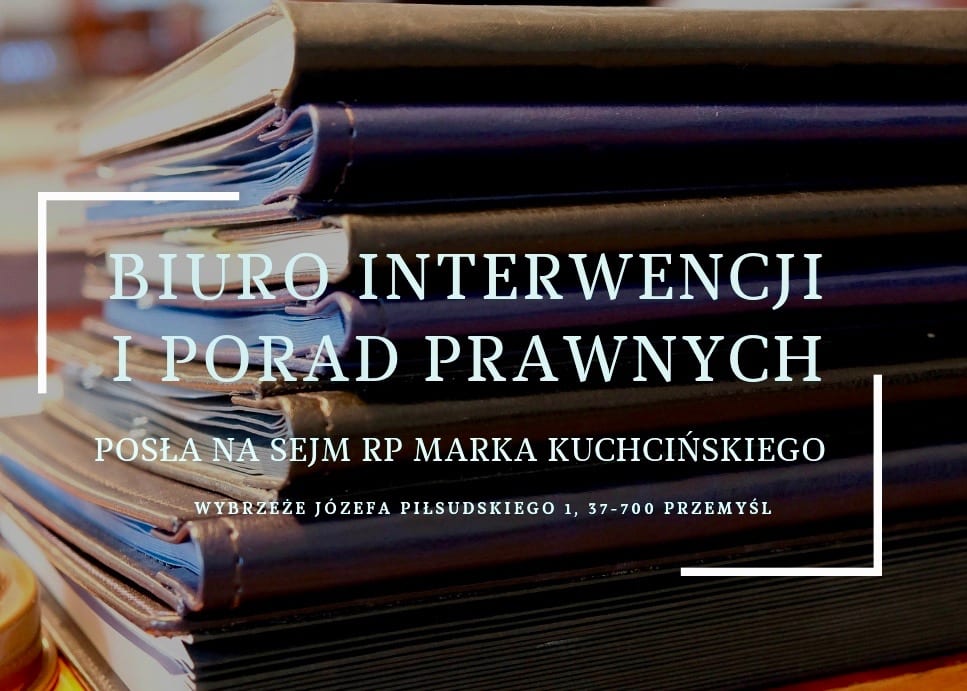One can wonder what is meant by "Polish monuments," and classify them according to various criteria. However, it is worthwhile - looking at them - to realize the important role they play in Budapest's landscape.
Tucked into the skyline of the Hungarian capital, they tell a story and accentuate its characters and episodes, which the authorities believe should be displayed. For local residents and tourists, they are a sure lesson in history, and in the case of historical politics, they please our eyes and remind us of the ties between nations that could count on mutual assistance even when the strangest confluence of circumstances put us in opposite political camps.

DADT
Where to start if not with the statue of General Jozef Bem, who is depicted most warmly as "Father Bem" (Hungarian: Bem Apó). His entire figure as the leader of the Hungarian uprising of 1848-1849 (in the work of sculptor Adolf Huszar) expresses strength and decisiveness. It alludes to the moment when Gen. Bem at the Battle of Piski (Hungarian. Csat squeaks) addressed his subordinates with the words: "I will take back the bridge or die. Forward Hungarians! No bridge, no Fatherland."
The monument, unveiled in 1934 on the Danube River, opposite the Hungarian Parliament building, has a history. It was from here that on October 23, 1956 - in solidarity with Poznan's June - a group of demonstrators organized themselves to launch the Hungarian uprising against communism and the Soviet Union in the wake of subsequent events. In turn, the Poles responded with humanitarian aid, sending some 44 tons of medicine and, above all, blood needed for transfusions for the large number of wounded.
ROYAL MARRIAGE
It was unveiled on October 30, 2013 on Castle Hill near Vienna Gate (Hungarian. Bécsi Kapú) in Buda. Its inauguration was deliberately timed to coincide with the meeting of the Central European Initiative and the participation of Lithuania, Poland and Hungary. It depicts the sitting monarchs. He was Lithuanian, she was Hungarian, and both were kings of Poland (Jadwiga earlier, as early as 1384, and Jagiello in 1386). It is to them that we owe the beginning of the dynastic policy carried out on a grand scale, because it included, in the execution of the successive Jagiellons, in addition to the Grand Duchy of Lithuania with the vastness of Ruthenia and the Crown of the Kingdom of Poland, also the Kingdom of Bohemia and the Crown of Saint Stephen, and temporarily still other countries.
Renowned Lithuanian sculptor Dalia Matulaite was criticized for the convention she chose to depict the appearance of the monarchs, as she alluded to the static statues of the ancient East. Critics likened the figures to statues of pharaohs and Sumerian rulers. However, we Poles must rejoice in the fact that Ladislaus Jagiello (Hungarian. Jagelló, also II. Ulászló), from whom Lithuanians used to distance themselves, has been recognized as a figure that unites rather than divides us with our northern neighbor.
HUNGARY ON THE POLISH THRONE
It is located in a park named after him (Báthory István park) and was supposed to be unveiled in 1933, but the ceremonies were postponed by ten years. And then it didn't happen either due to World War II. The idea didn't materialize until 1958. And of course, one can inquire whether it was more of a Hungarian or Polish ruler, but how artificial that would be... He was so much in common that he is even a symbol of our interstate and international friendship. He proved himself in both roles and is worthy of the most detailed research and popularization to make it clear by what methods he achieved success. The author dared to sculpt the figure of Batory from Jan Matejko's painting "Batory at Pskov", and one must wholeheartedly praise this concept. First of all, he respected our eminent historical painter and did not force himself with counter-proposals (which is a dare in itself), and secondly - he was ahead of the era of computer processing in 3D.
FOR YOUR FREEDOM
The monument is dedicated to both Pilsudski's Legionaries of 1914-1918 and Wysocki's Legionaries of 1848-1849, fighting for Hungary's independence. Unveiled in 1934, it has a beautiful content. Standing on a pedestal, a Polish legionary defends the hugged crown of St. Stephen with his drawn saber. The soldier is also shielded by a Polish eagle with his wing. The involvement of Poles in the Hungarian uprising during the Spring of Nations and the joint fight first against the Austrians and then the Russians, who aided the Habsburgs, bound our nations even more tightly together. The legionaries of World War I and our entire nation, defending Europe in 1920, received decisive help from the Hungarians in the form of arms and ammunition when we could count on no one but the Bratanians.
TOP RULERS
In front of the Church of the Blessed Virgin Mary, on two separate columns stand the statues of two Hungarian princesses (St. Hedwig and St. Kinga), who married our rulers in the best possible way in our history. Wojciech Abramowicz summed them up brilliantly: "One gave us salt, and the other gave us a university." The statue of St. Kinga was created through the efforts of activists from the Polish Personal Parish in Budapest, headed by its prominent Polish activist Andrzej Wesolowski, who died on February 13, 2022. These - how still young - girls, sent to Krakow by their fathers as a result of political agreements, passed the test of governance with the highest marks. Both in their time and in general, it is difficult to find rulers matching their wisdom. They provided their subjects under their rule with a peaceful and good time to live in prosperity.
THE CREATOR OF THE OPERA
At the building of the Hungarian National Opera (Hungarian. Magyar Állami Operaház) on the main street of the Hungarian capital, Andrássy útca) the balustered balustrade was decorated with sixteen figures of the world's most prominent opera composers. Stanislaw Moniuszko is our pride and most beloved composer, to whom Poles owe much not only in music, but also in national identity. However, he is not appreciated in the Western musical world to the extent that Hungarians have done, and we can count on them.
RIGHTEOUS AMONG THE NATIONS OF THE WORLD
The monument to the heroes - Henryk Slawik and József Antall (senior) - was unveiled on June 26, 2017 at György Goldmann Square. The Budapest monument is a copy of the one in Warsaw, which stood earlier on November 8, 2016 in the Swiss Valley leisure and entertainment garden. It was made by sculptor Władysław Dudek.
Henryk Slawik is our Silesian insurgent, social and local government activist. During World War II, as one of about 120,000 Poles, he found refuge in Hungary after the German and Soviet invasion of Poland. There, as chairman of the Civic Committee for the Care of Polish Refugees in Hungary (1939-1944), he became a plenipotentiary of the Minister of Labor of the Polish Government in Exile. His activities linked him to the Plenipotentiary of the Government of the Kingdom of Hungary for War Refugees, József Antall. The large number of immigrants also included many Jews from Poland, including children, especially orphans. These they surrounded with the greatest care and, in addition to the typical refugee assistance, they organized an orphanage for the youngest and most disadvantaged in the town of Vác (northern Hungary). There was also a kindergarten and a school with a Polish curriculum and pastoral care by priests. In order to conceal the presence of Jewish children there, they attended Catholic Masses, after which they were allowed to attend Judaic services, read Torah and learned Hebrew. After the fascists seized power in Hungary in 1944, the persecution of Jews began, and the Gestapo got on the trail of Henryk Slawik. Imprisoned in the Mauthausen death camp, he was interrogated and cruelly tortured. He died as a result of torture on August 23, 1944. However, he did not hand over his collaborator József Antall. The latter survived until 1976. The Yad Vashem Institute determined that Henryk Slawik and József Antall together saved about 5,000 Jews. Both were awarded the titles of Righteous Among the Nations.
Also in Katowice, on the square in front of the International Congress Center, there is a monument to the two heroes. It is a spatial composition, the core of which is made up of two steel-covered walls, with the two Jewish rescuers facing each other with descriptions in Polish and Hungarian. The monument was unveiled on March 21, 2015 as part of the Polish-Hungarian Days with the participation of the presidents of both countries.
POLISH VERDUN
At the right-bank abutment of the Margaret Bridge (Hungarian. Margit híd), at the end of the Danube waterfront named after General Joseph Bem is Przemysl emlékmű. It commemorates the defense against the Russians of one of the most important fortresses in Europe. It could be equaled by the fortress of Verdun and Krakow (but this one was not besieged). Here is the Carpathian lowland, and thus the transition from the Eastern European lowlands to the Hungarian lowlands (Hungarian. Alföld). Thus, the Battle of Przemyśl decided whether the Russians would invade Hungary and the Balkans. Many Poles and Hungarians (and other residents of the Habsburg monarchy) took part in it. The commander of the fortress, General Hermann Kusmanek, had 130,000 troops at his disposal. The first siege (IX-X 1914) was short and fruitless, but the second (XI 1914 - III 1915) proved unbearable. After the surrender, all the defenders were sent to prisoner-of-war camps in Russia. Austria-Hungary, together with Germany, undertook a counteroffensive after this defeat and recaptured Przemyśl on June 3, 1915. For Austria, this was the last significant military success, and for Hungary it was a serious dismissal of the threat of Russian occupation in the Great War of 1914-1918.
MONUMENT TO THE MARTYRS OF KATYNIA
In the square of the same name (Hungarian. Katinyi mártírok parkja), a Katyn memorial was erected near the ruins of a Roman amphitheater. It was initiated by the mayor of Budapest and formerly by councilman István Tarlós of the Fidesz party, who wrote the first Hungarian book on the Katyn massacre when he was young. The authors of the monument are two Hungarian artists, winners of a competition: Géza Szeri-Varga and Zoltán Szeri-Varga. It was supposed to be unveiled in April 2010 by Polish President Lech Kaczynski, but this did not happen for obvious reasons of the Smolensk catastrophe. The ceremony was therefore postponed until April 8, 2011. The monument is a granite cuboid with iron elements imitating trees and lighting effects. Next to it grow two oak trees, the symbolism of which is understood in two ways: Poland and Hungary, or the two officers of Hungarian origin serving in the Polish Army who fell victim to Stalin's Katyn genocide: Emánuel Aladár Korompay and Oskar Rudolf Kühnel. The former was a teacher of classical languages and later a lecturer in Hungarian at the University of Warsaw (from 1930). In World War I he was a decorated and promoted defender of Przemyśl. He married a Polish woman, with whom he had three daughters. They settled in Przemyśl because his hometown was in Czechoslovakia. He developed materials for Poles to learn Hungarian, most notably the first solid Polish-Hungarian and Hungarian-Polish dictionary. In August 1939, he stayed with students in Hungary, but returned to Poland upon hearing that the political situation had escalated. In September he fell into the hands of the Soviets in Zloczow and was murdered by the NKVD after his captivity in Starobielsk. Oskar Rudolf Kühnel was an artillery officer in the war against the Bolsheviks. He married a Polish woman and together they lived in various Polish cities - according to their military assignments. In the September campaign he was taken prisoner by the Soviets and was murdered in Kozielsk.
SZENT LASZLO
In front of the Hungarian King St. Ladislaus Church was commemorated its patron Szent Laszlo, who was born and raised in Krakow at the court of Prince Casimir the Restorer as his nephew. Hungarians saw him as a typical Pole, but he fit in with Hungarian realities. He retained a fondness for his Polish relatives and took kindly to Boleslaw Szczodry, who fled Poland after the assassination of St. Stanislaus. He even suffered a lack of gratitude from Boleslav. Nearly a century after his death, Ladislaus was canonized in 1192.
MONUMENT TO JAN PAWEŁ II
For the centennial of St. John Paul II's birth (May 18, 2020), his statue in St. Stephen's Basilica was unveiled. This is where Cardinal Karol Wojtyla frequented as Metropolitan of Krakow and where he came on pilgrimage as John Paul II. The monument was designed by Hungarian artists, brothers László and Norbert Kotorman, and after a Mass of thanksgiving for his pontificate, Hungarian Prime Minister Viktor Orbán paid tribute to the Great Pole.
Piotr Boroñ
VACATIONS WITH FELCZAK: Polish Monuments in Budapest | Felczak Institute Intézet (kurier.plus)




